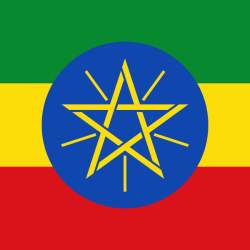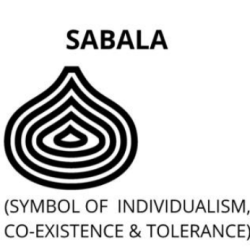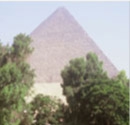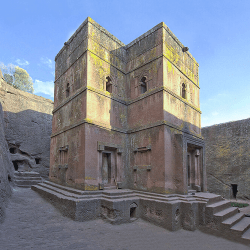Discover the full history and meaning of the Egyptian national flag, from its royal origins in 1923 to its powerful symbolism today. Learn what each color and emblem represents.
The national flag of Egypt stands as one of the most iconic symbols of the nation’s sovereignty, history, and identity. It has witnessed revolutionary change, colonial struggle, and the rebirth of a republic. Far more than just a banner, the Egyptian flag reflects deep cultural, political, and historical layers—each color and emblem telling a story that continues to shape the country today.
Evolution of the Egyptian Flag: A Historical Overview
Egypt’s national flag has evolved through royal mandates, political alliances, revolutions, and republican transitions. Its journey is a reflection of Egypt’s broader socio-political transformation over the 20th century.
The 1923 Flag of Egypt
Conditional Independence and Royal Decree
Following Egypt’s partial independence from Great Britain in 1922, a Royal Decree in 1923 introduced the country’s first modern national flag. It marked a crucial moment in Egypt’s modern political development.
Symbolism of the Green Flag with Crescent and Stars
This flag featured a deep green field with a white crescent and three white stars centered. The green color symbolized Islam and agriculture, while the crescent and stars reflected Egypt’s Muslim-majority population and aspirations of unity and independence.
The 1958 United Arab Republic Flag
Political Union Between Egypt and Syria
In 1958, Egypt and Syria formed the short-lived United Arab Republic (UAR), a political union aimed at pan-Arabism. A new flag was introduced to symbolize this union.
Introduction of the Tricolor Design
The UAR flag featured horizontal red, white, and black stripes, inspired by the Arab Liberation colors. The design remains in use today in many Arab nations.
Significance of the Two Green Stars
Two green stars were placed on the white stripe to represent the union between Egypt and Syria. Though the UAR dissolved in 1961, the symbolism left a lasting legacy.

1972 Flag Amendment: Rise of the Hawk of Quraish
Nationalism and Republicanism
With the UAR dissolved, Egypt revised the flag in 1972. The two stars were replaced with the Hawk of Quraish, a traditional Arab symbol, representing strength and unity under Arab nationalism.
Reasons Behind the Design Change
This change emphasized Egypt’s republican identity and departure from monarchical or external influences. It reinforced the values of revolution and self-governance.
The 1984 Flag: Adoption of the Eagle of Saladin
Saladin’s Legacy in Egyptian History
In 1984, the Hawk of Quraish was replaced by the Eagle of Saladin, a golden emblem symbolizing power, leadership, and resistance against Crusader and colonial forces. Saladin was a revered Muslim leader and a national hero.
Modern Interpretations of the Emblem
The golden eagle on the central white band, clutching a scroll bearing the words “Arab Republic of Egypt,” remains a symbol of national pride, unity, and resilience.
Color Symbolism of the Current Egyptian Flag
Red – Struggle Against Colonization
The top red stripe commemorates Egypt’s battles against British occupation and monarchy before the 1952 revolution.
White – Peaceful Revolution of 1952
The middle white stripe stands for the peaceful nature of the 1952 Revolution that ended the monarchy without bloodshed.
Black – End of Oppression
The bottom black stripe represents the defeat of colonialism and royal tyranny, ushering in a new era of republicanism.
Design Specifications and Flag Proportions
The current flag has a horizontal tricolor layout with equal bands of red, white, and black. The width is one-third of its length. The golden eagle is centered on the white band, facing the flagpole, in keeping with heraldic traditions.
Rules and Protocols for Flag Hoisting
Government Buildings and National Days
By law, the Egyptian flag is raised on all government institutions on Fridays, national holidays, and during parliamentary inaugurations.
Diplomatic Use Abroad
It is also flown at embassies and consulates on national days and when the Egyptian President visits the hosting country.
Legal Protections and Penal Provisions
Laws Against Desecration or Misuse
Defacing or dishonoring the flag is a criminal offense in Egypt. The law views such acts as a direct insult to the sovereignty of the state.
Respect for Foreign Flags
The law also prohibits desecration of foreign flags on Egyptian soil, ensuring diplomatic respect and international decorum.
Cultural and Patriotic Significance
National Unity and Civic Pride
From public schools to sports stadiums, the flag unites Egyptians across age, class, and region. It serves as a powerful reminder of shared heritage and national purpose.
The Flag in Public Ceremonies and Schools
Flag-raising ceremonies are part of everyday school rituals and official state functions, reinforcing patriotism among citizens.
Comparison with Other Arab Flags
Shared Colors, Unique Symbols
While many Arab flags share the red, white, black, and green palette, Egypt’s distinct eagle emblem sets it apart. It represents Egypt’s leadership in Arab history and independence movements.
Egypt’s Flag in International Context
Visibility at Global Events
Egypt’s flag proudly flies at global summits, sporting events like the Olympics, and UN missions—broadcasting Egypt’s heritage to the world.
A Legacy Woven in Color and Symbol
The Egyptian flag is more than a banner—it’s a visual chronicle of revolution, unity, independence, and pride. From monarchs to republics, from crescents to eagles, each transformation of the flag tells a compelling story of resilience and identity. As it continues to wave over Egypt and its people, it reminds the world of a nation deeply rooted in history and forever marching forward.
Frequently Asked Questions (FAQs)
1. What do the colors of the Egyptian flag mean?
Red represents the struggle against colonialism, white symbolizes a peaceful revolution, and black signifies the end of oppression.
2. What is the significance of the eagle in Egypt’s flag?
The golden Eagle of Saladin symbolizes power, freedom, and the legacy of Egypt’s fight for sovereignty.
3. When was the current Egyptian flag adopted?
The current flag design with the Eagle of Saladin was officially adopted in 1984.
4. What laws protect the Egyptian national flag?
Desecrating the flag is a criminal offense in Egypt, with laws in place to punish acts of contempt toward national or foreign flags.
5. How is Egypt’s flag different from other Arab nations?
While it shares common colors, Egypt’s flag is distinguished by the golden eagle emblem, symbolizing national strength and leadership.
6. Can Egyptian citizens use the flag for personal use?
Yes, but the flag must be used respectfully. Any misuse or defacement is punishable under Egyptian law.













